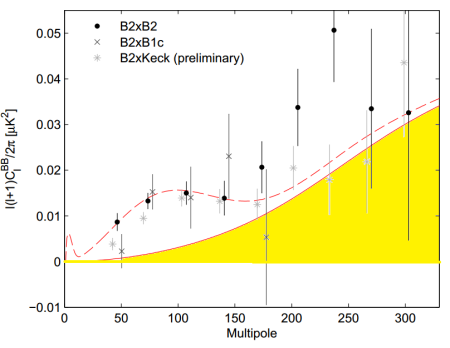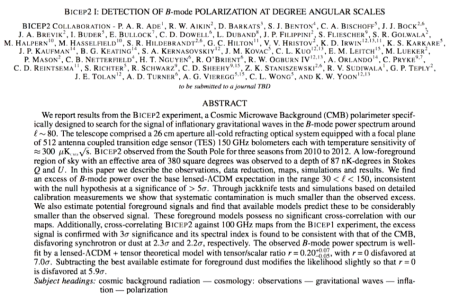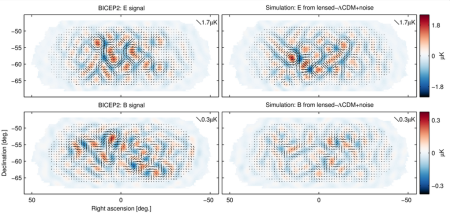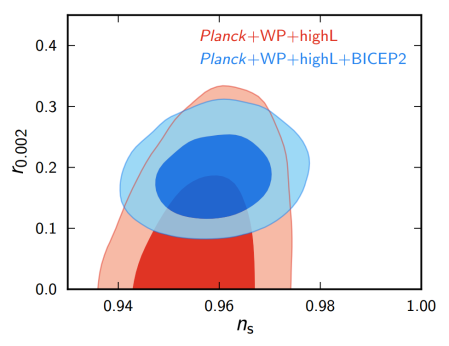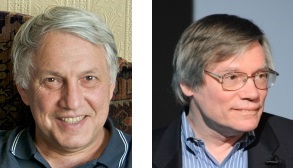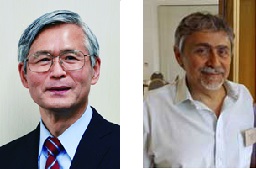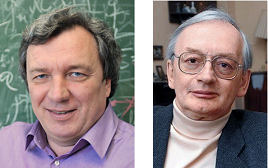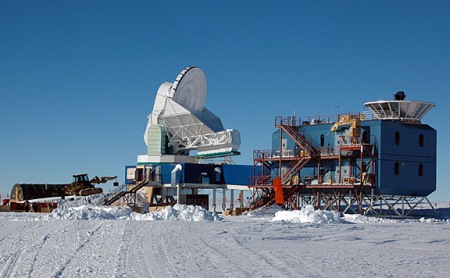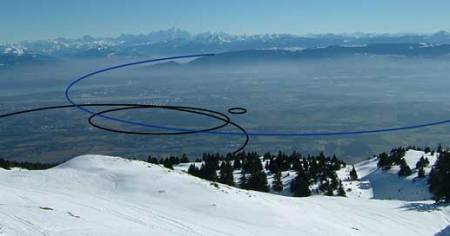2013 has been a great year for viXra. We already have more than 2000 new papers taking the total to over 6000. Many of them are about physics but other areas are also well covered. The range is bigger and better than ever and could never be summarised, so as the year draws to its end here instead is a snapshot of my own view of fundamental physics in 2013. Many physicists are reluctant to speculate about the big picture and how they see it developing. I think it would be useful if they were more willing to stick their neck out, so this is my contribution. I don’t expect much agreement from anybody, but I hope that it will stimulate some interesting discussion and thoughts. If you don’t like it you can always write your own summaries of physics or any other area of science and submit to viXra.

The discovery of the Higgs boson marks a watershed moment for fundamental physics. The standard model is complete but many mysteries remain. Most notably the following questions are unanswered and appear to require new physics beyond the standard model:
- What is dark matter?
- What was the mechanism of cosmic inflation?
- What mechanism led to the early production of galaxies and structure?
- Why does the strong interaction not break CP?
- What is the mechanism that led to matter dominating over anti-matter?
- What is the correct theory of neutrino mass?
- How can we explain fine-tuning of e.g. the Higgs mass and cosmological constant?
- How are the four forces and matter unified?
- How can gravity be quantised?
- How is information loss avoided for black holes?
- What is the small scale structure of spacetime?
- What is the large scale structure of spacetime?
- How should we explain the existence of the universe?
It is not unreasonable to hope that some further experimental input may provide clues that lead to some new answers. The Large Hadron Collider still has decades of life ahead of it while astronomical observation is entering a golden age with powerful new telescopes peering deep into the cosmos. We should expect direct detection of gravitational waves and perhaps dark matter, or at least indirect clues in the cosmic ray spectrum.
But the time scale for new discoveries is lengthening and the cost is growing. It is might be unrealistic to imagine the construction of new colliders on larger scales than the LHC. A theist vs atheist divide increasingly polarises Western politics and science. It has already pushed the centre of big science out of the United States over to Europe. As the jet stream invariably blows weather systems across the Atlantic, so too will come their political ideals albeit at a slower pace. It is no longer sufficient to justify fundamental science as a pursuit of pure knowledge when the men with the purse strings see it as an attack on their religion. The future of fundamental experimental science is beginning to shift further East and its future hopes will be found in Asia along with the economic prosperity that depends on it. The GDP of China is predicted to surpass that of the US and the EU within 5 years.
But there is another avenue for progress. While experiment is limited by the reality of global economics, theory is limited only by our intellect and imagination. The beasts of mathematical consistency have been harnessed before to pull us through. We are not limited by just what we can see directly, but there are many routes to explore. Without the power of observation the search may be longer, but the constraints imposed by what we have already seen are tight. Already we have strings, loops, twistors and more. There are no dead ends. The paths converge back together taking us along one main highway that will lead eventually to an understanding of how nature works at its deepest levels. Experiment will be needed to show us what solutions nature has chosen, but the equations themselves are already signposted. We just have to learn how to read them and follow their course. I think it will require open minds willing to move away from the voice of their intuition, but the answer will be built on what has come before.
Thirteen years ago at the turn of the millennium I thought it was a good time to make some predictions about how theoretical physics would develop. I accept the mainstream views of physicists but have unique ideas of how the pieces of the jigsaw fit together to form the big picture. My millennium notes reflected this. Since then much new work has been done and some of my original ideas have been explored by others, especially permutation symmetry of spacetime events (event symmetry), the mathematical theory of theories, and multiple quantisation through category theory. I now have a clearer idea about how I think these pieces fit in. On the other hand, my idea at the time of a unique discrete and natural structure underlying physics has collapsed. Naturalness has failed in both theory and experiment and is now replaced by a multiverse view which explains the fine-tuning of the laws of the universe. I have adapted and changed my view in the face of this experimental result. Others have refused to.
Every theorist working on fundamental physics has a set of ideas or principles that guides their work and each one is different. I do not suppose that I have a gift of insight that allows me to see possibilities that others miss. It is more likely that the whole thing is a delusion, but perhaps there are some ideas that could be right. In any case I believe that open speculation is an important part of theoretical research and even if it is all wrong it may help others to crystallise their own opposing views more clearly. For me this is just a way to record my current thinking so that I can look back later and see how it succeeded or changed.
The purpose of this article then is to give my own views on a number of theoretical ideas that relate to the questions I listed. The style will be pedagogical without detailed analysis, mainly because such details are not known. I will also be short on references, after all nobody is going to cite this. Here then are my views.
Causality
Causality has been discussed by philosophers since ancient times and many different types of causality have been described. In terms of modern physics there are only two types of causality to worry about. Temporal causality is the idea that effects are due to prior causes, i.e. all phenomena are caused by things that happened earlier. Ontological causality is about explaining things in terms of simpler principles. This is also known as reductionism. It does not involve time and it is completely independent of temporal causality. What I want to talk about here is temporal causality.
Temporal causality is a very real aspect of nature and it is important in most of science. Good scientists know that it is important not to confuse correlation with causation. Proper studies of cause and effect must always use a control to eliminate this easy mistake. Many physicists, cosmologists and philosophers think that temporal causality is also important when studying the cosmological origins of the universe. They talk of the evolving cosmos, eternal inflation, or numerous models of pre-big-bang physics or cyclic cosmologies. All of these ideas are driven by thinking in terms of temporal causality. In quantum gravity we find Causal Sets and Causal Dynamical Triangulations, more ideas that try to build in temporal causality at a fundamental level. All of them are misguided.
The problem is that we already understand that temporal causality is linked firmly to the thermodynamic arrow of time. This is a feature of the second law of thermodynamics, and thermodynamics is a statistical theory that emerges at macroscopic scales from the interactions of many particles. The fundamental laws themselves can be time reversed (along with CP to be exact). Physical law should not be thought of in terms of a set of initial conditions and dynamical equations that determine evolution forward in time. It is really a sum over all possible histories between past and future boundary states. The fundamental laws of physics are time symmetric and temporal causality is emergent. The origin of time’s arrow can be traced back to the influence of the big bang singularity where complete symmetry dictated low entropy.
The situation is even more desperate if you are working on quantum gravity or cosmological origins. In quantum gravity space and time should also be emergent, then the very description of temporal causality ceases to make sense because there is no time to express it in terms of. In cosmology we should not think of explaining the universe in terms of what caused the big bang or what came before. Time itself begins and ends at spacetime singularities.
Symmetry
When I was a student around 1980 symmetry was a big thing in physics. The twentieth century started with the realisation that spacetime symmetry was the key to understanding gravity. As it progressed gauge symmetry appeared to eventually explain the other forces. The message was that if you knew the symmetry group of the universe and its action then you knew everything. Yang-Mills theory only settled the bosonic sector but with supersymmetry even the fermionic side would follow, perhaps uniquely.
It was not to last. When superstring theory replaced supergravity the pendulum began its swing back taking away symmetry as a fundamental principle. It was not that superstring theory did not use symmetry, it had the old gauge symmetries, supersymmetries, new infinite dimensional symmetries, dualities, mirror symmetry and more, but there did not seem to be a unifying symmetry principle from which it could be derived. There was even an argument called Witten’s Puzzle based on topology change that seemed to rule out a universal symmetry. The spacetime diffeomorphism group is different for each topology so how could there be a bigger symmetry independent of the solution?
The campaign against symmetry strengthened as the new millennium began. Now we are told to regard gauge symmetry as a mere redundancy introduced to make quantum field theory appear local. Instead we need to embrace a more fundamental formalism based on the amplituhedron where gauge symmetry has no presence.
While I embrace the progress in understanding that string theory and the new scattering amplitude breakthroughs are bringing, I do not accept the point of view that symmetry has lost its role as a fundamental principle. In the 1990s I proposed a solution to Witten’s puzzle that sees the universal symmetry for spacetime as permutation symmetry of spacetime events. This can be enlarged to large-N matrix groups to include gauge theories. In this view spacetime is emergent like the dynamics of a soap bubble formed from intermolecular interaction. The permutation symmetry of spacetime is also identified with the permutation symmetry of identical particles or instantons or particle states.
My idea was not widely accepted even when shortly afterwards matrix models for M-theory were proposed that embodied the principle of event symmetry exactly as I envisioned. Later the same idea was reinvented in a different form for quantum graphity with permutation symmetry over points in space for random graph models, but still the fundamental idea is not widely regarded.
While the amplituhedron removes the usual gauge theory it introduces new dual conformal symmetries described by Yangian algebras. These are quantum symmetries unseen in the classical Super-Yang-Mills theory but they combine permutations symmetry over states with spacetime symmetries in the same way as event-symmetry. In my opinion different dual descriptions of quantum field theories are just different solutions to a single pregeometric theory with a huge and pervasive universal symmetry. The different solutions preserve different sectors of this symmetry. When we see different symmetries in different dual theories we should not conclude that symmetry is less fundamental. Instead we should look for the greater symmetry that unifies them.
After moving from permutation symmetry to matrix symmetries I took one further step. I developed algebraic symmetries in the form of necklace Lie algebras with a stringy feel to them. These have not yet been connected to the mainstream developments but I suspect that these symmetries will be what is required to generalise the Yangian symmetries to a string theory version of the amplituhedron. Time will tell if I am right.
Cosmology
We know so much about cosmology, yet so little. The cosmic horizon limits our view to an observable universe that seems vast but which may be a tiny part of the whole. The heat of the big bang draws an opaque veil over the first few hundred thousand years of the universe. Most of the matter around us is dark and hidden. Yet within the region we see the ΛCDM standard model accounts well enough for the formation of galaxies and stars. Beyond the horizon we can reasonably assume that the universe continues the same for many more billions of light years, and the early big bang back to the first few minutes or even seconds seems to be understood.
Cosmologists are conservative people. Radical changes in thinking such as dark matter, dark energy, inflation and even the big bang itself were only widely accepted after observation forced the conclusion, even though evidence built up over decades in some cases. Even now many happily assume that the universe extends to infinity looking the same as it does around here, that the big bang is a unique first event in the universe, that space-time has always been roughly smooth, that the big bang started hot, and that inflation was driven by scalar fields. These are assumptions that I question, and there may be other assumptions that should be questioned. These are not radical ideas. They do not contradict any observation, they just contradict the dogma that too many cosmologist live by.
The theory of cosmic inflation was one of the greatest leaps in imagination that has advanced cosmology. It solved many mysteries of the early universe at a stroke and Its predictions have been beautifully confirmed by observations of the background radiation. Yet the mechanism that drives inflation is not understood.
It is assumed that inflation was driven by a scalar inflaton field. The Higgs field is mostly ruled out (exotic coupling to gravity not withstanding), but it is easy to imagine that other scalar fields remain to be found. The problem lies with the smooth exit from the inflationary period. A scalar inflaton drives a DeSitter universe. What would coordinate a graceful exit to a nice smooth universe? Nobody knows.
I think the biggest clue is that the standard cosmological model has a preferred rest frame defined by commoving galaxies and the cosmic background radiation. It is not perfect on small scales but over hundreds of millions of light years it appears rigid and clear. What was the origin of this reference frame? A DeSitter inflationary model does not possess such a frame, yet something must have co-ordinated its emergence as inflation ended. These ideas simply do not fit together if the standard view of inflation is correct.
In my opinion this tells us that inflation was not driven by a scalar field at all. The Lorentz geometry during the inflationary period must have been spontaneously broken by a vector field with a non-zero component pointing in the time direction. Inflation must have evolved in a systematic and homogenous way through time while keeping this fields direction constant over large distances smoothing out any deviations as space expanded. The field may have been a fundamental gauge vector or a composite condensate of fermions with a non-zero vector expectation value in the vacuum. Eventually a phase transition ended the symmetry breaking phase and Lorentz symmetry was restored to the vacuum, leaving a remnant of the broken symmetry in the matter and radiation that then filled the cosmos.
The required vector field may be one we have not yet found, but some of the required features are possessed by the massive gauge bosons of the weak interaction. The mass term for a vector field can provide an instability favouring timelike vector fields because the signature of the metric reverses sign in the time direction. I am by no means convinced that the standard model cannot explain inflation in this way, but the mechanism could be complicated to model.
Another great mystery of cosmology is the early formation of galaxies. As ever more powerful telescopes have penetrated back towards times when the first galaxies were forming, cosmologists have been surprised to find active galaxies rapidly producing stars, apparently with supermassive black holes ready-formed at their cores. This contradicts the predictions of the cold dark matter model according to which the stars and black holes should have formed later and more slowly.
The conventional theory of structure formation is very Newtonian in outlook. After baryogenesis the cosmos was full of gas with small density fluctuations left over from inflation. As radiation decoupled, these anomalies caused the gas and dark matter to gently coalesce under their own weight into clumps that formed galaxies. This would be fine except for the observation of supermassive black holes in the early universe. How did they form?
I think that the formation of these black holes was driven by large scale gravitational waves left over from inflation rather than density fluctuations. As the universe slowed its inflation there would be parts that slowed a little sooner and other a little later. Such small differences would have been amplified by the inflation leaving a less than perfectly smooth universe for matter to form in. As the dark matter followed geodesics through these waves in spacetime it would be focused just as light waves on the bottom of a swimming pool is focused by surface waves into intricate light patterns. At the caustics the dark matter would come together as high speed to be compressed in structures along lines and surfaces. Large black holes would form at the sharpest focal points and along strands defined by the caustics. The stars and remaining gas would then gather around the black holes. Pulled in by their gravitation to form the galaxies. As the universe expanded the gravitational waves would fade leaving the structure of galactic clusters to mark where they had been.
The greatest question of cosmology asks how the universe is structured on large scales beyonf the cosmic horizon. We know that dark energy is making the expansion of the universe accelerate so it will endure for eternity, but we do not know if it extends to infinity across space. Cosmologists like to assume that space is homogeneous on large scales, partly because it makes cosmology simpler and partly because homogeneity is consistent with observation within the observable universe. If this is assumed then the question of whether space is finite or infinite depends mainly on the local curvature. If the curvature is positive then the universe is finite. If it is zero or negative the universe is infinite unless it has an unusual topology formed by tessellating polyhedrons larger than the observable universe. Unfortunately observation fails to tell us the sign of the curvature. It is near zero but we can’t tell which side of zero it lies.
This then is not a question I can answer but the holographic principle in its strongest form contradicts a finite universe. An infinite homogeneous universe also requires an explanation of how the big bang can be coordinated across an infinite volume. This leaves only more complex solutions in which the universe is not homogeneous. How can we know if we cannot see past the cosmic horizon? There are many homogeneous models such as the bubble universes of eternal inflation, but I think that there is too much reliance on temporal causality in that theory and I discount it. My preference is for a white hole model of the big bang where matter density decreases slowly with distance from a centre and the big bang singularity itself is local and finite with an outer universe stretching back further. Because expansion is accelerating we will never see much outside the universe that is currently visible so we may never know its true shape.
Naturalness
It has long been suggested that the laws of physics are fine-tuned to allow the emergence of intelligent life. This strange illusion of intelligent design could be explained in atheistic terms if in some sense many different universes existed with different laws of physics. The observation that the laws of physics suit us would then be no different in principle from the observation that our planet suits us.
Despite the elegance of such anthropomorphic reasoning many physicists including myself resisted it for a long time. Some still resist it. The problem is that the laws of physics show some signs of being unique according to theories of unification. In 2001 I like many thought that superstring theory and its overarching M-theory demonstrated this uniqueness quite persuasively. If there was only one possible unified theory with no free parameters how could an anthropic principle be viable?
At that time I preferred to think that fine-tuning was an illusion. The universe would settle into the lowest energy stable vacuum of M-theory and this would describe the laws of physics with no room for choice. The ability of the universe to support life would then just be the result of sufficient complexity. The apparent fine-tuning would be an illusion resulting from the fact that we see only one form of intelligent life so far. I imagined distant worlds populated by other forms of intelligence in very different environments from ours based on other solutions to evolution making use of different chemical combination and physical processes. I scoffed at science fiction stories where the alien life looked similar to us except for different skin textures or different numbers of appendages.
My opinion started to change when I learnt that string theory actually has a vast landscape of vacuum solutions and they can be stabilized to such an extent that we need not be living at the lowest energy point. This means that the fundamental laws of physics can be unique while different low energy effective theories can be realized as solutions. Anthropic reasoning was back on the table.
It is worrying to think that the vacuum is waiting to decay to a lower energy state at any place and moment. If it did so an expanding sphere of energy would expand at the speed of light changing the effective laws of physics as it spread out, destroying everything in its path. Many times in the billions of years and billions of light years of the universe in our past light come, there must have been neutron stars that collided with immense force and energy. Yet not once has the vacuum been toppled to bring doom upon us. The reason is that the energies at which the vacuum state was forged in the big bang are at the Planck scale, many orders of magnitude beyond anything that can be repeated in even the most violent events of astrophysics. It is the immense range of scales in physics that creates life and then allows it to survive.
The principle of naturalness was spelt out by ‘t Hooft in the 1980s, except he was too smart to call it a principle. Instead he called it a “dogma”. The idea was that the mass of a particle or other physical parameters could only be small if they would be zero given the realisation of some symmetry. The smallness of fermion masses could thus be explained by chiral symmetry, but the smallness of the Higgs mass required supersymmetry. For many of us the dogma was finally put to rest when the Higgs mass was found by the LHC to be unnaturally small without any sign of the accompanying supersymmetric partners. Fine tuning had always been a feature of particle physics but with the Higgs it became starkly apparent.
The vacuum would not tend to squander its range of scope for fine-tuning, limited as it is by the size of the landscape. If there is a cheaper way the typical vacuum will find it so that there is enough scope left to tune nuclear physics and chemistry for the right components required by life. Therefore I expect supersymmetry or some similar mechanism to come in at some higher scale to stabilise the Higgs mass and the cosmological constant. It may be a very long time indeed before that can be verified.
Now that I have learnt to accept anthropomorphism, the multiverse and fine-tuning I see the world in a very different way. If nature is fine-tuned for life it is plausible that there is only one major route to intelligence in the universe. Despite the plethora of new planets being discovered around distant stars, the Earth appears as a rare jewel among them. Its size and position in the goldilocks zone around a long lives stable star in a quite part of a well behaved galaxy is not typical. Even the moon and the outer gas giants seem to play their role in keeping us safe from natural instabilities. Yet of we were too safe life would have settled quickly into a stable form that could not evolve to higher functions. Regular cataclysmic events in our history were enough to cause mass extinction events without destroying life altogether, allowing it to develop further and further until higher intelligence emerged. Microbial life may be relatively common on other worlds but we are exquisitely rare. No sign of alien intelligence drifts across time and space from distant worlds.
I now think that where life exists it will be based on DNA and cellular structures much like all life on Earth. It will require water and carbon and to evolve to higher forms it will require all the commonly available elements each of which has its function in our biology or the biology of the plants on which we depend. Photosynthesis may be the unique way in which a stable carbon cycle can complement our need for oxygen. Any intelligent life will be much like us and it will be rare. This I see as the most significant prediction of fine tuning and the multiverse.
String Theory
String theory was the culmination of twentieth century developments in particles physics leading to ever more unified theories. By 2000 physicists had what appeared to be a unique mother theory capable of including all known particle physics in its spectrum. They just had to find the mechanism that collapsed its higher dimensions down to our familiar 4 dimensional spacetime.
Unfortunately it turned out that there were many such mechanisms and no obvious means to figure out which one corresponds to our universe. This leaves string theorists in a position unable to predict anything useful that would confirm their theory. Some people have claimed that this makes the theory unscientific and that physicists should abandon the idea and look for a better alternative. Such people are misguided.
String theory is not just a random set of ideas that people tried. It was the end result of exploring all the logical possibilities for the ways in which particles can work. It is the only solution to the problem of finding a consistent interaction of matter with gravity in the limit of weak fields on flat spacetime. I don’t mean merely that it is the only solution anyone could fine, it is the only solution that can work. If you throw it away and start again you will only return to the same answer by the same logic.
What people have failed to appreciate is that quantum gravity acts at energy scales well above those that can be explored in accelerators or even in astronomical observations. Expecting string theory to explain low energy particle physics was like expecting particle physics to explain biology. In principle it can, but to derive biochemistry from the standard model you would need to work out the laws of chemistry and nuclear physics from first principles and then search through the properties of all the possible chemical compounds until you realised that DNA can self-replicate. Without input from experiment this is an impossible program to put into practice. Similarly, we cannot hope to derive the standard model of particle physics from string theory until we understand the physics that controls the energy scales that separate them. There are about 12 orders of magnitude in energy scale that separate chemical reactions from the electroweak scale and 15 orders of magnitude that separate the electroweak scale from the Planck scale. We have much to learn.
How then can we test string theory? To do so we will need to look beyond particle physics and find some feature of quantum gravity phenomenology. That is not going to be easy because of the scales involved. We can’t reach the Planck energy, but sensitive instruments may be able to probe very small distance scales as small variations of effects over large distances. There is also some hope that a remnant of the initial big bang remains in the form of low frequency radio or gravitational waves. But first string theory must predict something to observe at such scales and this presents another problem.
Despite nearly three decades of intense research, string theorists have not yet found a complete non-perturbative theory of how string theory works. Without it predictions at the Planck scale are not in any better shape than predictions at the electroweak scale.
Normally quantised theories explicitly include the symmetries of the classical theories they quantised. As a theory of quantum gravity, string theory should therefore include diffeomorphism invariance of spacetime, and it does but not explicitly. If you look at string theory as a perturbation on a flat spacetime you find gravitons, the quanta of gravitational interactions. This means that the theory must respect the principles of general relativity in small deviations from the flat spacetime but it is not explicitly described in a way that makes the diffeomorphism invariance of general relativity manifest. Why is that?
Part of the answer coming from non-perturbative results in string theory is that the theory allows the topology of spacetime to change. Diffeomorphisms on different topologies form different groups so there is no way that we could see diffeomorphism invariance explicitly in the formulation of the whole theory. The best we could hope would be to find some group that has every diffeomorphism group as a subgroup and look for invariance under that.
Most string theorists just assume that this argument means that no such symmetry can exist and that string theory is therefore not based on a principle of universal symmetry. I on the other hand have proposed that the universal group must contain the full permutation group on spacettime events. The diffeomorphism group for any topology can then be regarded as a subgroup of this permutation group.
String theorists don’t like this because they see spacetime as smooth and continuous whereas permutation symmetry would suggest a discrete spacetime. I don’t think these two ideas are incompatible. In fact we should see spacetime as something that does not exists at all in the foundations of string theory. It is emergent. The permutation symmetry on events is really to be identified with the permutation symmetry that applies to particle states in quantum mechanics. A smooth picture of spacetime then emerges from the interactions of these particles which in string theory are the partons of the strings.
This was an idea I formulated twenty years ago, building symmetries that extend the permutation group first to large-N matrix groups and then to necklace Lie-algebras that describe the creation of string states. The idea was vindicated when matrix string theory was invented shortly after but very few people appreciated the connection.
The matric theories vindicated the matrix extensions in my work. Since then I have been waiting patiently for someone to vindicate the necklace Lie algebra symmetries as well. In recent years we have seen a new approach to quantum field theory for supersymmetric Yang-Mills which emphasises a dual conformal symmetry rather than the gauge symmetry. This is a symmetry found in the quantum scattering amplitudes rather than the classical limit. The symmetry takes the form of a Yangian symmetry related to the permutations of the states. I find it plausible that this will turn out to be a remnant of necklace Lie-algebras in the more complete string theory. There seems to be still some way to go before this new idea expressed in terms of an amplituhedron is fully worked out but I am optimistic that I will be proven right again, even if few people recognise it again.
Once this reformulation of string theory is complete we will see string theory in a very different way. Spacetime, causality and even quantum mechanics may be emergent from the formalism. It will be non-perturbative and rigorously defined. The web of dualities connecting string theories and the holographic nature of gravity will be derived exactly from first principles. At least that is what I hope for. In the non-perturbative picture it should be clearer what happens at high energies when space-time breaks down. We will understand the true nature of the singularities in black-holes and the big bang. I cannot promise that these things will be enough to provide predictions that can be observed in real experiments or cosmological surveys, but it would surely improve the chances.
Loop Quantum Gravity
If you want to quantised a classical system such as a field theory there are a range of methods that can be used. You can try a Hamiltonian approach, or a path integral approach for example. You can change the variables or introduce new ones, or integrate out some degrees of freedom. Gauge fixing can be handled in various ways as can renormalisation. The answers you get from these different approaches are not quite guaranteed to be equivalent. There are some choices of operator ordering that can affect the answer. However, what we usually find in practice is that there are natural choices imposed by symmetry principles or other requirements of consistency and the different results you get using different methods are either equivalent or very nearly so, if they lead to a consistent result at all.
What should this tell us about quantum gravity? Quantising the gravitational field is not so easy. It is not renormalisable in the same way that other gauge theories are, yet a number of different methods have produced promising results. Supergravity follows the usual field theory methods while String theory uses a perturbative generalisation derived from the old S-matrix approach. Loop Quantum Gravity makes a change of variables and then follows a Hamiltonian recipe. There are other methods such as Twistor Theory, Non-Commutative Geometry, Dynamical Triangulations, Group Field Theory, Spin Foams, Higher Spin Theories etc. None has met with success in all directions but each has its own successes in some directions.
While some of these approaches have always been known to be related, others have been portrayed as rivals. In particular the subject seems to be divided between methods related to string theory and methods related to Loop Quantum Gravity. It has always been my expectation that the two sides will eventually come together, simply because of the fact that different ways of quantising the same classical system usually do lead to equivalent results. Superficially strings and loops seem like related geometric objects, i.e. one dimensional structures in space tracing out two dimensional world sheets in spacetime.
String Theorists and Loop Qunatum Gravitists alike have scoffed at the suggestion that these are the same thing. They point out that string pass through each other unlike the loops which form knot states. String theory also works best in ten dimensions while LQG can only be formulated in 4. String Theory needs supersymmetry and therefore matter, while LQG tries to construct first a consistent theory of quantum gravity alone. I see these differences very differently from most physicists. I observe that when strings pass through each other they can interact and the algebraic diagrams that represent this are very similar to the Skein relations used to describe the knot theory of LQG. String theory does indeed use the same mathematics of quantum groups to describe its dynamics. If LQG has not been found to require supersymmetry or higher dimensions it may be because the perturbative limit around flat spacetime has not yet been formulated and that is where the consistency constraints arise. In fact the successes and failures of the two approaches seem complementary. LQG provides clues about the non-perturbative background independent picture of spacetime that string theorists need.
Methods from Non-Commutative Geometry have been incorporated into string theory and other approaches to quantum gravity for more than twenty years and in the last decade we have seen Twistor Theory applied to string theory. Some people see this convergence as surprising but I regard it as natural and predictable given the nature of the process of quantisation. Twistors have now been applied to scattering theory and to supergravity in 4 dimensions in a series of discoveries that has recently led to the amplituhedron formalism. Although the methods evolved from observations related to supersymmetry and string theory they seem in some ways more akin to the nature of LQG. Twistors were originated by Penrose as an improvement on his original spin-network idea and it is these spin-networks that describe states in LQG.
I think that what has held LQG back is that it separates space and time. This is a natural consequence of the Hamiltonian method. LQG respects diffeomorphism invariance, unlike string theory, but it is really only the spatial part of the symmetry that it uses. Spin networks are three dimensional objects that evolve in time, whereas Twistor Theory tries to extend the network picture to 4 dimensions. People working on LQG have tended to embrace the distinction between space and time in their theory and have made it a feature claiming that time is philosophically different in nature from space. I don’t find that idea appealing at all. The clear lesson of relativity has always been that they must be treated the same up to a sign.
The amplituhedron makes manifest the dual conformal symmetry to yang mills theory in the form of an infinite dimensional Yangian symmetry. These algebras are familiar from the theory of integrable systems where they may were deformed to bring in quantum groups. In fact the scattering amplitude theory that applies to the planar limit of Yang Mills does not use this deformation, but here lies the opportunity to united the theory with Loop Quantum Gravity which does use the deformation.
Of course LQG is a theory of gravity so if it is related to anything it would be supergravity or sting theory, not Yang Mills. In the most recent developments the scattering amplitude methods have been extended to supergravity by making use of the observation that gravity can be regarded as formally the square of Yang-Mills. Progress has thus been made on formulating 4D supergravity using twistors, but so far without this deformation. A surprise observation is that supergravity in this picture requires a twistor string theory to make it complete. If the Yangian deformation could be applied to these strings then they could form knot states just like the loops in LQG. I cant say if it will pan out that way but I can say that it would make perfect sense if it did. It would mean that LQG and string theory would finally come together and methods that have grown out of LQG such as spin foams might be applied to string theory.
The remaining mystery would be why this correspondence worked only in 4 spacetime dimensions. Both Twistors and LQG use related features of the symmetry of 4 dimensional spacetime that mean it is not obvious how to generalise to higher dimensions, while string theory and supergravity have higher forms that work up to 11 dimensions. Twistor theory is related to conformal field theory is a reduced symmetry from geometry that is 2 dimensions higher. E.g. the 4 dimensional conformal group is the same as the 6 dimensional spin groups. By a unique coincidence the 6 dimensional symmetries are isomorphic to unitary or special linear groups over 4 complex variables so these groups have the same representations. In particular the fundamental 4 dimensional representation of the unitary group is the same as the Weyl spinor representation in six real dimensions. This is where the twistors come from so a twistor is just a Weyl spinor. Such spinors exist in any even number of dimensions but without the special properties found in this particular case. It will be interesting to see how the framework extends to higher dimensions using these structures.
Quantum Mechanics
Physicists often chant that quantum mechanics is not understood. To paraphrase some common claims: If you think you understand quantum mechanics you are an idiot. If you investigate what it is about quantum mechanics that is so irksome you find that there are several features that can be listed as potentially problematical; indeterminacy, non-locality, contextuality, observers, wave-particle duality and collapse. I am not going to go through these individually; instead I will just declare myself a quantum idiot if that is what understanding implies. All these features of quantum mechanics are experimentally verified and there are strong arguments that they cannot be easily circumvented using hidden variables. If you take a multiverse view there are no conceptual problems with observers or wavefunction collapse. People only have problems with these things because they are not what we observe at macroscopic scales and our brains are programmed to see the world classically. This can be overcome through logic and mathematical understanding in the same way as the principles of relativity.
I am not alone in thinking that these things are not to be worried about, but there are some other features of quantum mechanics that I have a more extraordinary view of. Another aspect of quantum mechanics that gives some cause for concern is its linearity, Theories that are linear are often usually too simple to be interesting. Everything decouples into modes that act independently in a simple harmonic way, In quantum mechanics we can in principle diagonalise the Hamiltonian to reduce the whole universe to a sum over energy eigenstates. Can everything we experience by encoded in that one dimensional spectrum?
In quantum field theory this is not a problem, but there we have spacetime as a frame of reference relative to which we can define a privileged basis for the Hilbert space of states. It is no longer the energy spectrum that just counts. But what if spacetime is emergent? What then do we choose our Hilbert basis relative to? The symmetry of the Hilbert space must be broken for this emergence to work, but linear systems do not break their symmetries. I am not talking about the classical symmetries of the type that gets broken by the Higgs mechanism. I mean the quantum symmetries in phase space.
Suppose we accept that string theory describes the underlying laws of physics, even if we don’t know which vacuum solution the universe selects. Doesn’t string theory also embody the linearity of quantum mechanics? It does so long as you already accept a background spacetime, but in string theory the background can be changed by dualities. We don’t know how to describe the framework in which these dualities are manifest but I think there is reason to suspect that quantum mechanics is different in that space, and it may not be linear.
The distinction between classical and quantum is not as clear-cut as most physicists like to believe. In perturbative string theory the Feynman diagrams are given by string worldsheets which can branch when particles interact. Is this the classical description or the quantum description? The difference between classical and quantum is that the worldsheets will extremise their area in the classical solutions but follow any history in the quantum. But then we already have multi-particle states and interactions in the classical description. This is very different from quantum field theory.
Stepping back though we might notice that quantum field theory also has some schizophrenic characteristics. The Dirac equation is treated as classical with non-linear interactions even though it is a relativistic Schrödinger equation, with quantum features such as spin already built-in. After you second quantise you get a sum over all possible Feynman graphs much like the quantum path integral sum over field histories, but in this comparison the Feynman diagrams act as classical configurations. What is this telling us?
My answer is that the first and second quantisation are the first in a sequence of multiple iterated quantisations. Each iteration generates new symmetries and dimensions. For this to work the quantised layers must be non-linear just as the interaction between electrons and photons is non-linear is the so-called first-quantised field theory. The idea of multiple quantisations goes back many years and did not originate with me, but I have a unique view of its role in string theory based on my work with necklace lie algebras which can be constructed in an iterated procedure where one necklace dimension is added at each step.
Physicists working on scattering amplitudes are at last beginning to see that the symmetries in nature are not just those of the classical world. There are dual-conformal symmetries that are completed only in the quantum description. These seem to merge with the permutation symmetries of the particle statistics. The picture is much more complex than the one painted by the traditional formulations of quantum field theory.
What then is quantisation? When a Fock space is constructed the process is formally like an exponentiation. In category picture we start to see an origin of what quantisation is because exponentiation generalises to the process of constructing all functions between sets, or all functors between categories and so on to higher n-categories. Category theory seems to encapsulate the natural processes of abstraction in mathematics. This I think is what lies at the base of quantisation. Variables become functional operators, objects become morphisms. Quantisation is a particular form of categorification, one we don’t yet understand. Iterating this process constructs higher categories until the unlimited process itself forms an infinite omega-category that describes all natural processes in mathematics and in our multiverse.
Crazy ideas? Ill-formed? Yes, but I am just saying – that is the way I see it.
Black Hole Information
We have seen that quantum gravity can be partially understood by using the constraint that it needs to make sense in the limit of small perturbations about flat spacetime. This led us to strings and supersymmetry. There is another domain of thought experiments that can tell us a great deal about how quantum gravity should work and it concerns what happens when information falls into a black hole. The train of arguments is well known so I will not repeat them here. The first conclusion is that the entropy of a black hole is given by its horizon area in Plank units and the entropy in any other volume is less than the same Bekenstein bound taken from the surrounding surface. This leads to the holographic principle that everything that can be known about the state inside the volume can be determined from a state on its surface. To explain how the inside of a blackhole can be determined from its event horizon or outside we use a black hole correspondence principle which uses the fact that we cannot observe both the inside and then outside at a later time. Although the reasoning that leads to these conclusions is long and unsupported by any observation It is in my opinion quite robust and is backed up by theoretical models such as AdS/CFT duality.
There are some further conclusions that I would draw from black hole information that many physicists might disagree with. If the information in a volume is limited by the surrounding surface then it means we cannot be living in a closed universe with a finite volume like the surface of a 4-sphere. If we did you could extend the boundary until it shrank back to zero and conclude that there is no information in the universe. Some physicists prefer to think that the Bekenstein bound should be modified on large scales so that this conclusion cannot be drawn but I think the holographic principle holds perfectly to all scales and the universe must be infinite or finite with a different topology.
Recently there has been a claim that the holographic principle leads to the conclusion that the event-horizon must be a firewall through which nothing can pass. This conclusion is based on the assumption that information inside a black hole is replicated outside through entanglement. If you drop two particles with fully entangled spin states into a black hole you cannot have another particle outside that is also entangled to this does not make sense. I think the information is replicated on the horizon in a different way.
It is my view that the apparent information in the bulk volume field variables must be mostly redundant and that this implies a large symmetry where the degrees of symmetry match the degrees of freedom in the fields or strings. Since there are fundamental fermions it must be a supersymmetry. I call a symmetry of this sort a complete symmetry. We know that when there is gauge symmetry there are corresponding charges that can be determined on a boundary by measuring the flux of the gauge field. In my opinion a generalization of this using a complete symmetry accounts for holography. I don’t think that this complete symmetry is a classical symmetry. It can only be known properly in a full quantum theory much as dual conformal gauge symmetry is a quantum symmetry.
Some physicists assume that if you could observe Hawking radiation you would be looking at information coming from the event horizon. It is not often noticed that the radiation is thermal so if you observe it you cannot determine where it originated from. There is no detail you could focus on to measure the distance of the source. It makes more sense to me to think of this radiation as emanating from a backward singularlty inside the blackhole. This means that a black hole once formed is also a white hole. This may seem odd but it is really just an extension of the black hole correspondence principle. I also agree with those who say that as black hole shrink they become indistinguishable from heavy particles that decay by emitting radiation.
Ontology
Every theorist working on fundamental physics needs some background philosophy to guide their work. They may think that causality and time are fundamental or that they are emergent for example. They may have the idea that deeper laws of physics are simpler. They may like reductionist principles or instead prefer a more anthropomorphic world view. Perhaps they think the laws of physics must be discrete, combinatorical and finite. They may think that reality and mathematics are the same thing, or that reality is a computer simulation or that it is in the mind of God. These things affect the theorist’s outlook and influence the kind of theories they look at. They may be meta-physical and sometimes completely untestable in any real sense, but they are still important to the way we explore and understand the laws of nature.
In that spirit I have formed my own elaborate ontology as my way of understanding existence and the way I expect the laws of nature to work out. It is not complete or finished and it is not a scientific theory in the usual sense, but I find it a useful guide for where to look and what to expect from scientific theories. Someone else may take a completely different view that appears contradictory but may ultimately come back to the same physical conclusions. That I think is just the way philosophy works.
In my ontology it is universality that counts most. I do not assume that the most fundamental laws of physics should be simple or beautiful or discrete or finite. What really counts is universality, but that is a difficult concept that requires some explanation.
It is important not to be misled by the way we think. Our mind is a computer running a program that models space, time and causality in a way that helps us live our lives but that does not mean that these things are important in the fundamental laws of physics. Our intuition can easily mislead our way of thinking. It is hard understand that time and space are interlinked and to some extent interchangeable but we now know from the theory of relativity that this is the case. Our minds understand causality and free will, the flow of time and the difference between past and future but we must not make the mistake of assuming that these things are also important for understanding the universe. We like determinacy, predictability and reductionism but we can’t assume that the universe shares our likes. We experience our own consciousness as if it is something supernatural but perhaps it is no more than a useful feature of our psychology, a trick to help us think in a way that aids our survival.
Our only real ally is logic. We must consider what is logically possible and accept that most of what we observe is emergent rather than fundamental. The realm of logical possibilities is vast and described by the rules of mathematics. Some people call it the Platonic realm and regard it as a multiverse within its own level of existence, but such thoughts are just mindtricks. They form a useful analogy to help us picture the mathematical space when really logical possibilities are just that. They are possibilities stripped of attributes like reality or existence or place.
Philosophers like to argue about whether mathematical concepts are discovered or invented. The only fair answer is both or neither. If we made contact with alien life tomorrow it is unlikely that we would find them playing chess. The rules of chess are mathematical but they are a human invention. On the other hand we can be quite sure that our new alien friends would know how to use the real numbers if they are at least as advanced as us. They would also probably know about group theory, complex analysis and prime numbers. These are the universal concepts of mathematics that are “out there” waiting to be discovered. If we forgot them we would soon rediscover them in order to solve general problems. Universality is a hard concept to define. It distinguishes the parts of mathematics that are discovered from those that are merely invented, but there is no sharp dividing line between the two.
Universal concepts are not necessarily simple to define. The real numbers for example are notoriously difficult to construct if you start from more basic axiomatic constructs such as set theory. To do that you have to first define the natural numbers using the cardinality of finite sets and Peano’s axioms. This is already an elaborate structure and it is just the start. You then extend to the rationals and then to the reals using something like the Dedekind cut. Not only is the definition long and complicated, but it is also very non-unique. The aliens may have a different definition and may not even consider set theory as the right place to start, but it is sure and certain that they would still possess the real numbers as a fundamental tool with the same properties as ours. It is the higher level concept that is universal, not the definition.
Another example of universality is the idea of computability. A universal computer is one that is capable of following any algorithm. To define this carefully we have to pick a particular mathematical construction of a theoretical computer with unlimited memory space. One possibility for this is a Turing machine but we can use any typical programming language or any one of many logical systems such as certain cellular automata. We find that the set of numbers or integer sequences that they can calculate is always the same. Computability is therefore a universal idea even though there is no obviously best way to define it.
Universality also appears in complex physical systems where it is linked to emergence. The laws of fluid dynamics, elasticity and thermodynamics describe the macroscopic behaviour of systems build form many small elements interacting, but the details of those interactions are not important. Chaos arises in any nonlinear system of equations at the boundary where simple behaviour meets complexity. Chaos we find is described by certain numbers that are independent of how the system is constructed. These examples show how universality is of fundamental importance in physical systems and motivates the idea that it can be extended to the formation of the fundamental laws too.
Universality and emergence play a key role in my ontology and they work at different levels. The most fundamental level is the Platonic realm of mathematics. Remember that the use of the word realm is just an analogy. You can’t destroy this idea by questioning the realms existence or whether it is inside our minds. It is just the concept that contains all logically consistent possibilities. Within this realm there are things that are invented such as the game of chess, or the text that forms the works or Shakespeare or Gods. But there are also the universal concepts that any advanced team of mathematicians would discover to solve general problems they invent.
I don’t know precisely how these universal concepts emerge from the platonic realm but I use two different analogies to think about it. The first is emergence in complex systems that give us the rules of chaos and thermodynamics. This can be described using statistical physics that leads to critical systems and scaling phenomena where universal behaviour is found. The same might apply to to the complex system consisting of the collection of all mathematical concepts. From this system the laws of physics may emerge as universal behaviour. This analogy is called the Theory of Theories by me or the Mathematical Universe Hypothesis by another group. However this statistical physics analogy is not perfect.
Another way to think about what might be happening is in terms of the process of abstraction. We know that we can multiply some objects in mathematics such as permutations or matrices and they follow the rules of an abstract structure called a group. Mathematics has other abstract structures like fields and rings and vector spaces and topologies. These are clearly important examples of universality, but we can take the idea of abstraction further. Groups, fields, rings etc. all have a definition of isomorphism and also something equivalent to homomorphism. We can look at these concepts abstractly using category theory, which is a generalisation of set theory encompassing these concepts. In category theory we find universal ideas such as natural transformations that help us understand the lower level abstract structures. This process of abstraction can be continued giving us higher dimensional n-categories. These structures also seem to be important in physics.
I think of emergence and abstraction as two facets of the deep concept of universality. It is something we do not understand fully but it is what explains the laws of physics and the form they take at the most fundamental level.
What physical structures emerge at this first level? Statistical physics systems are very similar in structure to quantum mechanics both of which are expressed as a sum over possibilities. In category theory we also find abstract structures very like quantum mechanics systems including structures analogous to Feynman diagrams. I think it is therefore reasonable to assume that some form of quantum physics emerges at this level. However time and unitarity do not. The quantum structure is something more abstract like a quantum group. The other physical idea present in this universal structure is symmetry, but again in an abstract form more general than group theory. It will include supersymmetry and other extensions of ordinary symmetry. I think it likely that this is really a system described by a process of multiple quantisation where structures of algebra and geometry emerge but with multiple dimensions and a single universal symmetry. I need a name for this structure that emerges from the platonic realm so I will call it the Quantum Realm.
When people reach for what is beyond M-Theory or for an extension of the amplituhedrom they are looking for this quantum realm. It is something that we are just beginning to touch with 21st century theories.
From this quantum realm another more familiar level of existence emerges. This is a process analogous to superselection of a particular vacuum. At this level space and time emerge and the universal symmetry is broken down to the much smaller symmetry. Perhaps a different selection would provide different numbers of space and time dimensions and different symmetries. The laws of physics that then emerge are the laws of relativity and particle physics we are familiar with. This is our universe.
Within our universe there are other processes of emergence which we are more familiar with. Causality emerges from the laws of statistical physics within our universe with the arrow of time rooted in the big bang singularity. Causality is therefore much less fundamental than quantum mechanics and space and time. The familiar structures of the universe also emerge within including life. Although this places life at the least fundamental level we must not forget the anthropic influence it has on the selection of our universe from the quantum realm.
Experimental Outlook
Theoretical physics continues to progress in useful directions but to keep it on track more experimental results are needed. Where will they come from?
In recent decades we have got used to mainly negative results in experimental particle physics, or at best results that merely confirm theories from 50 years ago. The significance of negative results is often understated to the extent that the media portray them as failures. This is far from being the case.
The LHC’s negative results for SUSY and other BSM exotics may be seen as disappointing but they have led to the conclusion that nature appears fine-tuned at the weak scale. Few theorists had considered the implications of such a result before, but now they are forced to. Instead of wasting time on simplified SUSY theories they will turn their efforts to the wider parameter space or they will look for other alternatives. This is an important step forward.
A big question now is what will be the next accelerator? The ILS or a new LEP would be great Higgs factories, but it is not clear that they would find enough beyond what we already know. Given that the Higgs is at a mass that gives it a narrow width I think it would be better to build a new detector for the LHC that is specialised for seeing diphoton and 4 lepton events with the best possible energy and angular resolution. The LHC will continue to run for several decades and can be upgraded to higher luminosity and even higher energy. This should be taken advantage of as much as possible.
However, the best advance that would make the LHC more useful would be to change the way it searches for new physics. It has been too closely designed with specific models in mind and should have been run to search for generic signatures of particles with the full range of possible quantum numbers, spin, charge, lepton and baryon number. Even more importantly the detector collaborations should be openly publishing likelihood numbers for all possible decay channels so that theorists can then plug in any models they have or will have in the future and test them against the LHC results. This would massively increase the value of the accelerator and it would encourage theorists to look for new models and even scan the data for generic signals. The LHC experimenters have been far too greedy and lazy by keeping the data to themselves and considering only a small number of models.
There is also a movement to construct a 100 TeV hadron collider. This would be a worthwhile long term goal and even if it did not find new particles that would be a profound discovery about the ways of nature. If physicists want to do that they are going to have to learn how to justify the cost to contributing nations and their tax payers. It is no use talking about just the value of pure science and some dubiously justified spin-offs. CERN must reinvent itself as a postgraduate physics university where people learn how to do highly technical research in collaborations that cross international frontiers. Most will go on to work in industry using the skills they have developed in technological research or even as technology entrepreneurs. This is the real economic benefit that big physics brings and if CERN can’t track how that works and promote it they cannot expect future funding.
With the latest results from the LUX experiments hope of direct detection of dark matter have faded. Again the negative result is valuable but it may just mean that dark matter does not interact weakly at all. The search should go on but I think more can be done with theory to model dark matter and its role in galaxy formation. If we can assume that dark matter started out with the same temperature as the visible universe then it should be possible to model its evolution as it settled into galaxies and estimate the mass of the dark matter particle. This would help in searching for it. Meanwhile the searches for dark matter will continue including other possible forms such as axions. Astronomical experiments such as AMS-2 may find important evidence but it is hard to find optimism there. A better prospect exists for observations of the dark age of the universe using new radio telescopes such as the square kilometre array that could detect hydrogen gas clouds as they formed the first stars and galaxies.
Neutrino physics is one area that has seen positive results that go beyond the standard model. This is therefore an important area to keep going. They need to settle the question of whether neutrinos are Majorana spinors and produce figures for neutrino masses. Observation of cosmological high energy neutrinos is also an exciting area with the Ice-Cube experiment proving its value.
Gravitational wave searches have continued to be a disappointment but this is probably due to over-optimism about the nature of cosmological sources rather than a failure of the theory of gravitational waves themselves. The new run with Advanced LIGO must find them otherwise the field will be in trouble. The next step would be LISA or a similar detector in space.
Precision measurements are another area that could bring results. Measurements of the electron dipole moment can be further improved and there must be other similar opportunities for inventive experimentalists. If a clear anomaly is found it could set the scale for new physics and justify the next generation of accelerators.
There are other experiments that could yield positive results such as cosmic ray observatories and low frequency radio antennae that might find an echo from the big bang beyond the veil of the primordial plasma. But if I had to nominate one area for new effort it would have to be the search for proton decay. So far results have been negative pushing the proton lifetime to at least 1034 years but this has helped eliminate the simplest GUT models that predicted a shorter lifetime. SUSY models predict lifetimes of over 1036 years but this can be reached if we are willing to set up a detector around a huge volume of clear Antarctic ice. Ice-Cube has demonstrated the technology but for proton decay a finer array of light detectors is needed to catch the lower energy radiation from proton decay. If decays were detected they would give us positive information about physics at the GUT scale. This is something of enormous importance and its priority must be raised.
Apart from these experiments we must rely on the advance of precision technology and the inventiveness of the experimental physicist. Ideas such as the holometer may have little hope of success but each negative result tells us something and if someone gets lucky a new flood of experimental data will nourish our theories, There is much that we can still learn.

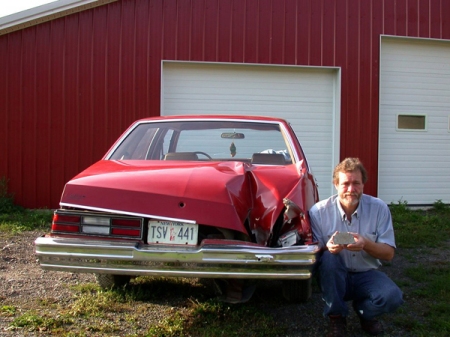



 Posted by Phi G
Posted by Phi G 

